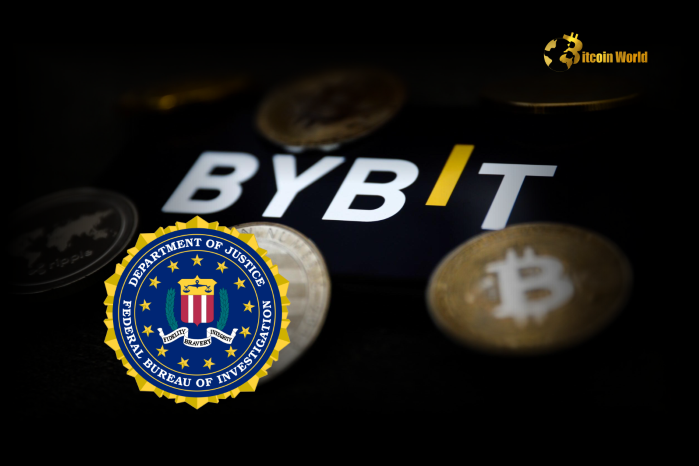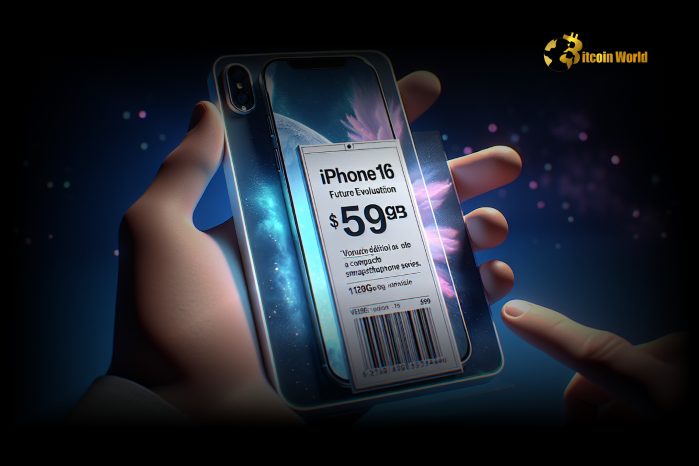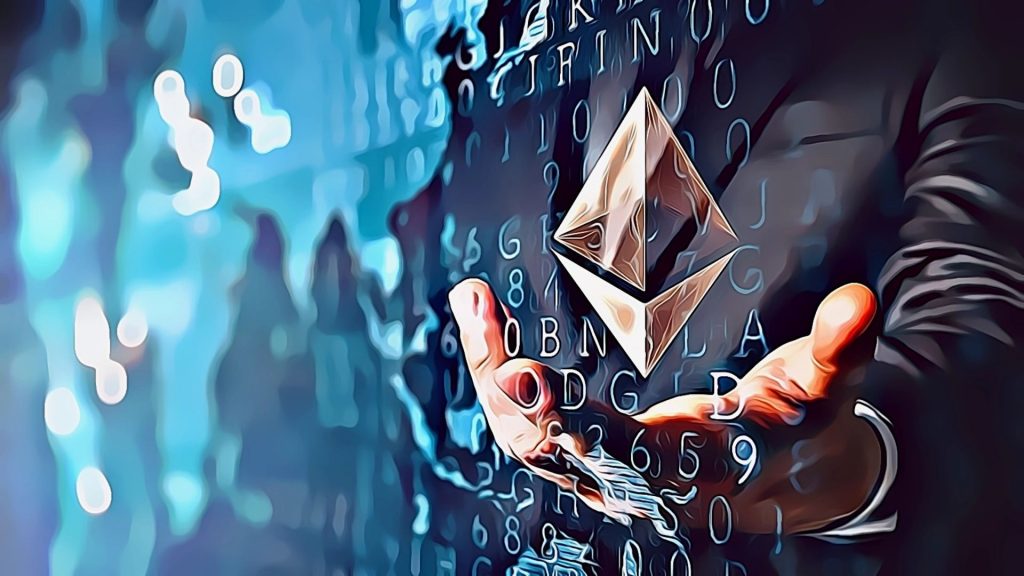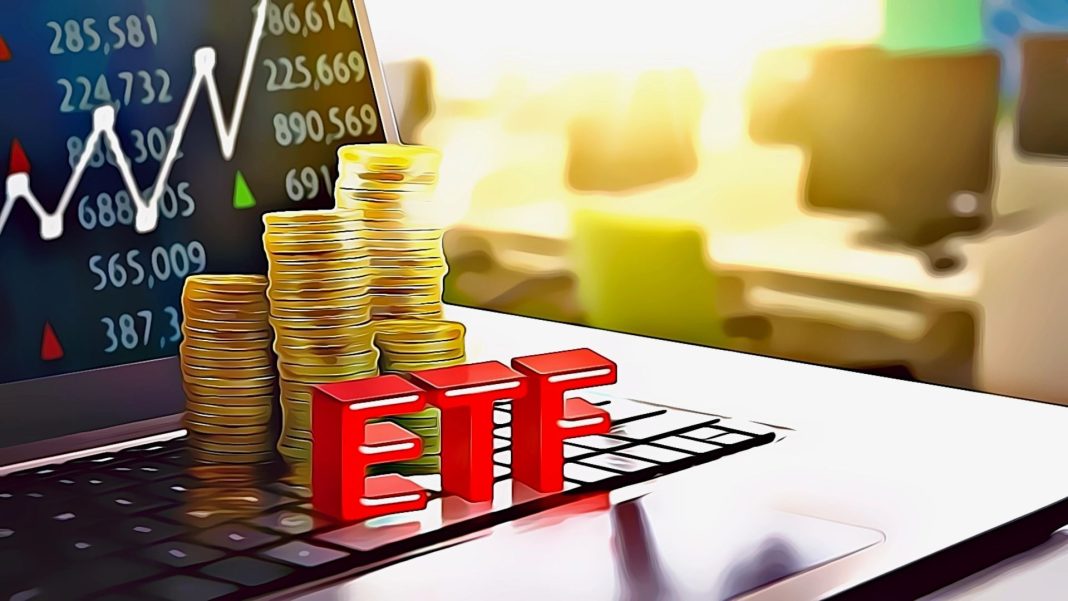
$SHELL Added to Binance Hodler Airdrops
CoinOtag
You can visit the page to read the article.
Source: CoinOtag
Disclaimer: The opinion expressed here is not investment advice – it is provided for informational purposes only. It does not necessarily reflect the opinion of BitMaden. Every investment and all trading involves risk, so you should always perform your own research prior to making decisions. We do not recommend investing money you cannot afford to lose.
Urgent FBI Warning: Crypto Platforms Must Block Transactions After Shocking Bybit Hack

Hold on to your digital wallets, crypto enthusiasts! The U.S. Federal Bureau of Investigation (FBI) has issued a stark warning that should send shivers down the spine of every crypto exchange and service provider. They’re urging everyone in the crypto space to take immediate action and block transactions tied to the staggering $1.4 billion Bybit hack . Yes, you read that right – billion with a ‘B’! This isn’t just another minor security breach; it’s a massive cyber heist, and the FBI is pointing fingers directly at a notorious culprit: North Korea’s Lazarus Group. Why is the FBI Issuing an Urgent Warning About the Bybit Hack? The FBI isn’t known for mincing words, especially when it comes to national security and financial crimes. Their public call to action regarding the Bybit hack underscores the severity of this situation. But why are they getting involved, and why is this so urgent? Here’s the breakdown: National Security Threat: The Lazarus Group, identified by the FBI as the perpetrators, isn’t just a random group of cybercriminals. They are a sophisticated, state-sponsored hacking organization linked to North Korea. Their activities are often aimed at generating revenue for the North Korean regime, which faces international sanctions. This makes the Bybit hack not just a financial crime, but a potential national security issue. Preventing Further Losses: The FBI’s warning is a proactive measure to prevent the stolen funds from being laundered and further disseminated throughout the crypto ecosystem. By urging crypto platforms to block associated transactions, they aim to cut off the flow of illicit funds and make it harder for the Lazarus Group to profit from their crime. Protecting the Integrity of Crypto: Incidents like the Bybit hack can erode trust in the cryptocurrency space. The FBI’s involvement signals a serious commitment to policing the digital asset world and protecting users and platforms from malicious actors. It’s about maintaining the integrity and long-term viability of the crypto market. Lazarus Group: Unmasking the Masterminds Behind the Crypto Heist So, who exactly is this Lazarus Group that the FBI is pointing to? They aren’t exactly newcomers to the world of cybercrime. Think of them as the James Bonds of the hacking world, but instead of saving the world, they’re emptying digital bank accounts. Here’s what you need to know about the Lazarus Group: North Korean Affiliation: The Lazarus Group is widely believed to be a state-sponsored hacking group operating under the Democratic People’s Republic of Korea (DPRK), commonly known as North Korea. Numerous cybersecurity firms and government agencies have linked them to the North Korean regime. History of High-Profile Attacks: They have been implicated in a string of audacious cyberattacks, not just in the crypto world but across various sectors. Their resume includes bank heists, ransomware attacks, and even the infamous Sony Pictures Entertainment hack in 2014. They are not shy about targeting big names and high-value targets. Sophisticated Tactics: The Lazarus Group is known for its advanced and evolving hacking techniques. They are adept at using malware, phishing scams, and social engineering to infiltrate systems and steal funds. They are constantly adapting their methods to stay ahead of cybersecurity defenses. Financial Motivation: A primary driver for the Lazarus Group’s cyber activities is believed to be generating revenue for the cash-strapped North Korean regime. Sanctions have severely limited North Korea’s access to traditional financial systems, making cybercrime a lucrative alternative source of income. The FBI’s confirmation of the Lazarus Group’s involvement in the Bybit hack is a significant development, adding another layer of seriousness to this already alarming situation. What Does This Mean for Crypto Platforms and Users? The FBI’s urgent appeal to crypto platforms has far-reaching implications for the entire cryptocurrency ecosystem. It’s a wake-up call, highlighting the ongoing risks and the need for robust security measures. But what does this really mean for platforms and individual users? For Crypto Platforms: Enhanced Security Protocols: This incident should serve as a catalyst for crypto platforms to re-evaluate and strengthen their security infrastructure. This includes investing in advanced threat detection systems, multi-factor authentication, and regular security audits. Transaction Monitoring: Platforms need to implement sophisticated transaction monitoring systems to identify and flag suspicious activities, especially those linked to known malicious actors like the Lazarus Group. This requires leveraging blockchain analytics and intelligence sharing. Collaboration and Information Sharing: The FBI’s call emphasizes the importance of collaboration and information sharing within the crypto industry and with law enforcement agencies. Platforms should actively participate in threat intelligence networks to stay ahead of emerging cyber threats. User Education: Platforms have a responsibility to educate their users about cybersecurity best practices, including how to protect their accounts and assets from phishing attacks and other scams. For Crypto Users: Vigilance and Awareness: Users need to be extra vigilant and aware of potential scams and phishing attempts. Be cautious about clicking on suspicious links or downloading attachments from unknown sources. Strong Security Practices: Employ strong, unique passwords and enable two-factor authentication (2FA) on all crypto accounts. Consider using hardware wallets for storing significant amounts of cryptocurrency offline. Stay Informed: Keep up-to-date with the latest cybersecurity threats and best practices in the crypto space. Follow reputable news sources and security experts for timely information. The $1.4 Billion Question: Can Stolen Crypto Be Recovered? The sheer scale of the $1.4 billion hack is mind-boggling. It raises a critical question: can such massive amounts of stolen cryptocurrency be recovered? The answer is complex and depends on several factors. Challenges in Crypto Recovery: Anonymity and Decentralization: Cryptocurrencies, by their nature, offer a degree of anonymity and operate on decentralized networks. This can make tracing and recovering stolen funds significantly more challenging compared to traditional financial systems. Mixers and Tumblers: Cybercriminals often use crypto mixers or tumblers to obfuscate the origin and destination of stolen funds, making it harder to track their movement on the blockchain. Jurisdictional Issues: Cybercrime often transcends international borders, creating jurisdictional challenges for law enforcement agencies trying to recover stolen assets. The Lazarus Group’s North Korean affiliation further complicates matters. Hope for Recovery: Blockchain Analysis: Despite the challenges, blockchain analysis tools are becoming increasingly sophisticated. Law enforcement agencies and specialized firms are using these tools to trace the flow of stolen funds on the blockchain, even through mixers. Collaboration and Information Sharing: International collaboration between law enforcement agencies and information sharing with crypto platforms and cybersecurity firms can enhance the chances of recovering stolen assets. Seizure and Asset Forfeiture: In some cases, law enforcement agencies have successfully seized and forfeited cryptocurrency assets linked to cybercrime. While full recovery may be difficult, partial recovery is sometimes possible. While the odds of recovering the entire $1.4 billion may be slim, the ongoing efforts by the FBI and other agencies, combined with advancements in blockchain analysis, offer a glimmer of hope for some level of asset recovery. Taking Action: Protecting the Future of Crypto The Bybit hack and the FBI’s urgent warning are a stark reminder that the cryptocurrency space is not immune to sophisticated cyber threats. It’s a call to action for crypto platforms , users, and the entire industry to prioritize security, vigilance, and collaboration. This isn’t just about preventing financial losses; it’s about safeguarding the future of crypto and maintaining trust in this innovative technology. By taking proactive steps to enhance security, share threat intelligence, and educate users, the crypto community can collectively strengthen its defenses against malicious actors like the Lazarus Group and build a more secure and resilient digital asset ecosystem. The time to act is now – the FBI has sounded the alarm, and it’s crucial to heed their urgent warning. To learn more about the latest crypto security trends, explore our article on key developments shaping crypto security and risk management. CoinOtag

Amazing iPhone 16e Review: Unleash Apple Intelligence on a Budget with A18 Chip
Apple has quietly dropped its latest contender in the smartphone arena, the iPhone 16e, priced at a compelling $599. Forget the flashy launch events; this phone speaks for itself. While it might not scream ‘innovation’ from the rooftops, the iPhone 16e is a calculated move by Apple to deliver reliability and affordability, especially appealing in today’s economic climate. For crypto enthusiasts and tech-savvy users who value both performance and value, let’s dive deep into what makes this budget-friendly iPhone tick and if it’s the smart choice for you. Decoding the Design: Is the iPhone 16e a Throwback or a Modern Marvel? At first glance, the iPhone 16e might seem like a familiar face. Borrowing design cues from the iPhone 13 and 14, it sports the classic notch, a comfortable size, and the handy Action button from the iPhone 15. However, don’t mistake familiarity for outdatedness. This design choice is a strategic move by Apple to keep costs down without sacrificing the premium feel. While it lacks the cutting-edge Camera Control of the iPhone 16 and the sleek Dynamic Island, the 16e presents itself as a ‘modern’ take on a proven form factor. It’s not trying to reinvent the wheel, but rather refine it for a broader audience. For users upgrading from older iPhones or switching from Android, the 16e offers a seamless transition into the Apple ecosystem without a jarring design overhaul. The Power Within: A18 Chip and Future-Proofing Your Investment Here’s where the iPhone 16e truly shines: under the hood, it packs the same powerful A18 chip found in the flagship iPhone 16. This is a game-changer for a phone in this price range. Why is this significant? Firstly, it makes the iPhone 16e the most affordable entry point to Apple’s top-tier silicon. Secondly, and perhaps more importantly, it ensures future-proofing. Apple’s commitment to supporting its chips means the A18 will enjoy software updates and feature enhancements for years to come, longer than the A16 chip in the iPhone 15. This future-proofing extends to Apple Intelligence , Apple’s ambitious generative AI platform. Previously limited to the iPhone 16 line and high-end iPhone 15 models, Apple Intelligence is now accessible on the iPhone 16e , unlocking a new realm of smart features for a wider user base. Key Specs Comparison: iPhone 16e vs. iPhone 15 vs. iPhone 16 To better understand where the iPhone 16e fits, let’s compare its specifications with the iPhone 15 and iPhone 16: Feature iPhone 16e iPhone 15 iPhone 16 Chip A18 A16 A18 Apple Intelligence Yes No (Limited) Yes Starting Price $599 $699 $799 Display 6.1-inch Super Retina XDR (Notch, 1200 nits) 6.1-inch Super Retina XDR (Dynamic Island, 2000 nits) 6.1-inch Super Retina XDR (Dynamic Island, 2000 nits) RAM 8GB 6GB 8GB Rear Camera Single 48MP (“2-in-1” System) Dual 48MP Main + 12MP Ultrawide Dual 48MP Main + 12MP Ultrawide MagSafe No Yes Yes Battery Life (Stated) 26 hours 20 hours 22 hours C1 Modem: An Unsung Hero for Battery Life While modems might not be the most glamorous component, the custom C1 modem in the iPhone 16e deserves a shout-out. This marks Apple’s first foray into designing its own modem, and the results are impressive. The C1 modem is not only power-efficient, contributing to the iPhone 16e’s exceptional battery life (longer than both the 15 and 16), but it’s also more compact. This space-saving design allowed Apple to incorporate a larger battery, further extending the phone’s usage time. For users constantly on the go, especially in the fast-paced crypto world, reliable battery life is invaluable, and the iPhone 16e delivers. Apple Intelligence on a Budget: Is it Worth it? Apple Intelligence is the headline feature Apple is betting on, and it’s now available on the iPhone 16e . Currently, it offers features like text rewriting, summaries, and generative image creation through Image Playground. While the current iteration of Apple Intelligence might seem basic to some, it’s crucial to remember that this is just the beginning. Apple is heavily investing in generative AI, and Apple Intelligence is poised to become a central part of the iPhone experience in the coming years. Having the A18 chip and 8GB of RAM in the iPhone 16e ensures you’re ready to take advantage of these future AI advancements. Visual Intelligence, Apple’s answer to Google Lens, is also present, adding another layer of smart functionality. Current Apple Intelligence Features: Text Rewrite: Refine your writing for clarity and tone. Summaries: Get quick digests of articles and documents. Generative Imagery (Image Playground): Create fun, AI-generated images. Visual Intelligence: Identify objects and text in your photos. Camera Compromises: Single Lens, Smart Photography To reach the $599 price point, some compromises were necessary, and the camera system is one area where the iPhone 16e differs significantly from its pricier siblings. Instead of a dual-camera setup, the iPhone 16e features a single 48-megapixel sensor. However, Apple cleverly markets this as a “2-in-1” camera system, leveraging computational photography to create a pseudo-telephoto effect. This “integrated telephoto” provides a zoomed-in, 12-megapixel version of your image without drastic quality loss. While you lose the versatility of a dedicated telephoto or ultrawide lens, the iPhone 16e still captures impressive photos for a single-sensor phone, representing a notable upgrade from previous iPhone SE models. For casual users and social media enthusiasts, the camera performance will likely be more than sufficient. However, photography enthusiasts might miss the flexibility of a multi-lens system. The Price Point Power Play: iPhone 16e and Market Dynamics The real star of the iPhone 16e show isn’t a groundbreaking feature, but the price. At $599, it’s $200 cheaper than the iPhone 16 and $100 less than the iPhone 15. This price reduction is strategically aimed at bolstering Apple’s presence in key markets like China and India, where price sensitivity is high and competition from domestic Android manufacturers is fierce. While a $100-$200 price difference might seem modest in developed markets, it’s significant in developing economies. The iPhone 16e aims to bridge the gap between affordability and the premium iPhone experience. However, the competitive landscape remains challenging, with older iPhone models like the 14 and 15 still available, and Android alternatives offering compelling value propositions. Making the Smart Choice: Is the iPhone 16e for You? Choosing the right iPhone in Apple’s current lineup requires careful consideration of your needs and priorities. The iPhone 16e is not a ‘budget’ phone in the traditional sense, but rather an ‘entry-level’ iPhone that prioritizes key features while making strategic compromises. If you crave the absolute latest and greatest, the iPhone 16 is still the top dog. If Apple Intelligence isn’t a major draw for you right now, the iPhone 15 remains a solid option. However, if you seek a balance of performance, future-proofing with Apple Intelligence , and affordability, the iPhone 16e emerges as a compelling choice. You sacrifice features like MagSafe, Dynamic Island, Camera Control, and a dual-camera system, but gain access to the powerful A18 chip and a longer-lasting battery at a significantly lower price. For many users, especially those mindful of their budget, the iPhone 16e strikes a sweet spot, delivering the core iPhone experience with smart compromises. To learn more about the latest Apple Intelligence trends, explore our article on key developments shaping AI features. CoinOtag











